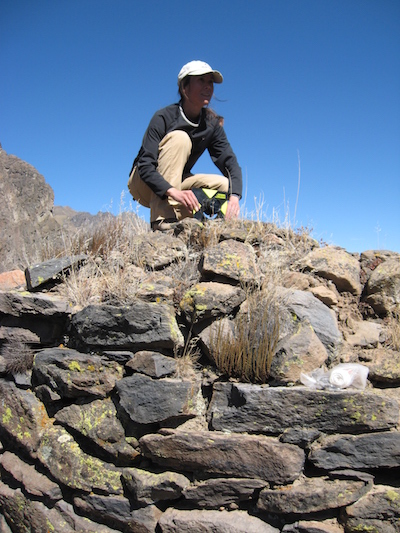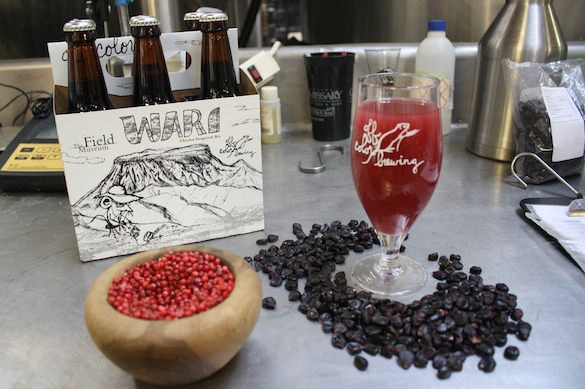
After a long, dusty day excavating an archaeological site, nothing quite hits the spot like a frosty beverage. For Tiffiny Tung, associate professor of anthropology, all that hard work is about to pay off twice with the debut of a custom beer inspired by the fruits of her labor.
Wari Ale, a light, delicate beer whose rosy tint derives from bright pink molle berries and purple corn, will soon be available to connoisseurs over 21 at Chicago’s Field Museum and select Chicago retailers. The beer, crafted by Off Color Brewing, is based on a recipe treasured by an ancient Peruvian empire called the Wari and links to the museum’s permanent Ancient Americas exhibit.
“Archaeologists have known for a really long time that corn beer, or chicha, was socially important in the Andes,” said Tung. The Incas used it as a kind of political or social currency to build and solidify relationships with nearby lords.
But, while excavating a site called Beringa associated with the pre-Inca Wari culture, Tung found evidence that the Wari brewed their own version of chicha using the molle berry, the fruit of a local pepper plant.
Tung’s discovery was important, because 117 miles away at a site called Cerro Baúl, Ryan Williams, associate curator of anthropology at The Field Museum and a lead researcher of that excavation, had come upon the remains of a chicha de molle brewery, which he believes would have been able to produce 1,500–2,000 liters of beer in a single batch. Like Tung, Williams found evidence that, as corn beer did for the Incas, chicha de molle played a significant relationship-building role to the Wari.
“Tiffiny’s excavation at Beringa was key to understanding that Wari chicha de molle was a brewing phenomenon that went beyond our work at Cerro Baúl and was part of the larger Wari imperial project,” said Williams.
“It’s also really delicious,” said Tung.

The Field Museum first partnered with Off Color Brewing to produce a lager called Tooth and Claw brewed in honor of Sue, the museum’s Tyrannosaurus Rex skeleton. Williams hopes the museum will continue to be able to offer more beers inspired by the museum’s exhibits, collections and research in the future.